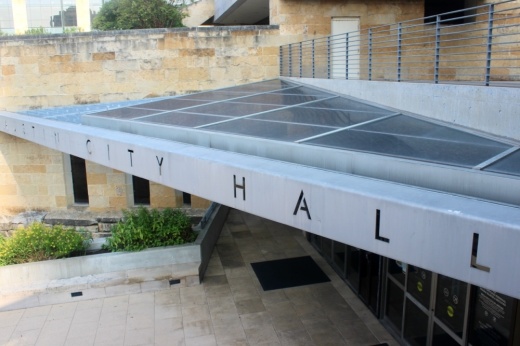Earlier in March, Austin City Council approved starting the process of opening a trauma recovery center by asking the city manager to determine if it was a feasible task.
Now, the Office of Violence Prevention in Austin is working with the Alliance for Safety and Justice as well as with Crime Survivors for Safety and Justice to the feasibility and implementation of a center in Austin. Both organizations work to bring trauma recovery centers, or TRCs, to underserved and underrepresented communities. They also work to establish ways of dealing with overincarceration through public safety initiatives.
So far, the city of Austin has proposed $1 million in funding for a trauma recovery center in the fiscal year 2022-23 budget, which council is scheduled to approve in August.
The Alliance for Safety and Justice and Crime Survivors for Safety and Justice overtook an analysis of Austin by identifying what agencies would be best to work with the TRC model in Austin.
Discussions between the Alliance for Safety and Justice and city staff resulted in the recommendation of a TRC being able to serve communities with the highest need.
Since there is no TRC in Texas, city staff is looking at models from two states that have TRCs—Illinois and California—to figure out how to implement funding for a TRC. Funding for TRCs in those states comes from governmental agencies, insurance claims, in-kind support and private philanthropy.
Another source of funding for a TRC comes from federal Victims of Crime Act dollars.
Terra Tucker, Texas State director for the Alliance of Safety and Justice, said the alliance has been working to bring a TRC to Austin for the past two years through advocacy with the Crime Survivors of Safety and Justice.
“They have held town hall meetings and done advocacy around what they need and what they think their communities need—and that being trauma recovery centers, which provide services to underserved populations for individuals who have experienced violent crime, so town halls, meeting with commissioners and City Council members, and op-eds,” Tucker said.
The Alliance for Safety and Justice initiated the task of creating a TRC in Austin, Tucker said.
“We believe that ... most communities need better access to services for survivors of violent crime,” Tucker said.
Tucker said when a TRC is operational, people seeking their services can walk in and begin the process of getting help.
“You could walk in the door, and say, ‘Hey, I'm a survivor of a crime. I need some help.’ Plain and simple. They don't require, you know, police reports or anything like that,” Tucker said. “Another way is through use with other organizations, with hospitals and with the police department. A large part of what trauma recovery centers do is link existing services and systems,” Tucker said.
Tucker also said a TRC helps reduce the risk of incarceration by breaking habits and cycles of abuse.
“Unaddressed trauma can lead to substance use issues and, you know, just unhealthy habits. And so in addressing that, and breaking that pattern we increase the safety and community,” Tucker said.
A July report published by the Alliance for Safety and Justice outlines some of the benefits offered by a TRC as well as the gaps between the number of victims of violent crime who do not get assistance and support compared to victims who do. The report suggests having one TRC per 100,000 residents or a city with a population of 100,000.
The report states, “A TRC can fill these gaps by providing intensive case management and trauma-informed mental health treatment to someone recovering from a crime. Wraparound, comprehensive services include help with immediate practical needs after violence, such as accessing food, medical care, and shelter, as well as individual and group therapy to support emotional healing. If clients need legal assistance, the centers work to link them to attorneys or nonprofit or legal firms that can help them navigate the law around complicated processes such as ending a lease or taking time off work.”
Austin City Council Member Vanessa Fuentes brought the resolution forward to direct the city manager into implementing a TRC to help victims of violent crimes.
“We're really looking at how can we increase and provide robust, holistic services that help crime survivors in their healing journey because what happens to the survivors once they're out of the hospital setting, and what happened to those who don't feel comfortable even going to authorities to report a crime or getting the type of services that they need?” she said.
Fuentes also said Austin is in need of the services a TRC provides.
“The data is there to show that it reduces revictimization; it reduces homelessness; and it actually increases reporting of crimes,” Fuentes said. "And so that's who the TRC is for. And we desperately need it here in Austin because it's providing robust services to survivors of violent crime.”
Fuentes said the type of care people can receive at a TRC is unique to that individual on a case-by-case basis.
“The services that would be provided by a trauma recovery center are unique to that individual, and the length of time is unique to that individual. The type of services that will be provided include therapy, legal counseling, social work and the assistance navigating the different systems applying for victims compensation funds,” Fuentes said.
Travis County District Attorney Jose Garza said he supports opening a TRC in Austin and that his office has budgeted funds toward opening a TRC in Austin. Garza said a TRC is a way to help reduce gun violence in Travis County.
“We believe that it is absolutely crucial that we center victims of crime, particularly victims of violent crime, in our efforts to reduce gun violence in Travis County,” Garza said. “We know so often that people who perpetrate acts of gun violence have often themselves been victims of gun violence. And so we think it is key to our public safety to meet the needs of people who are victims of crime in our community.”
Garza said the DA’s office has implemented strategies in dealing with victims of violent crimes, such as adding a victim witness coordinator division to help connect victims of violent crimes to social services. The department is overwhelmed with the number of cases it is receiving, which Garza said can be relieved by opening a TRC in Austin.
“The reality is our team is overwhelmed by the amount of trauma that most victims suffer. And so a recovery center would be a significant additional set of resources to meet the needs of victims,” Garza said.





